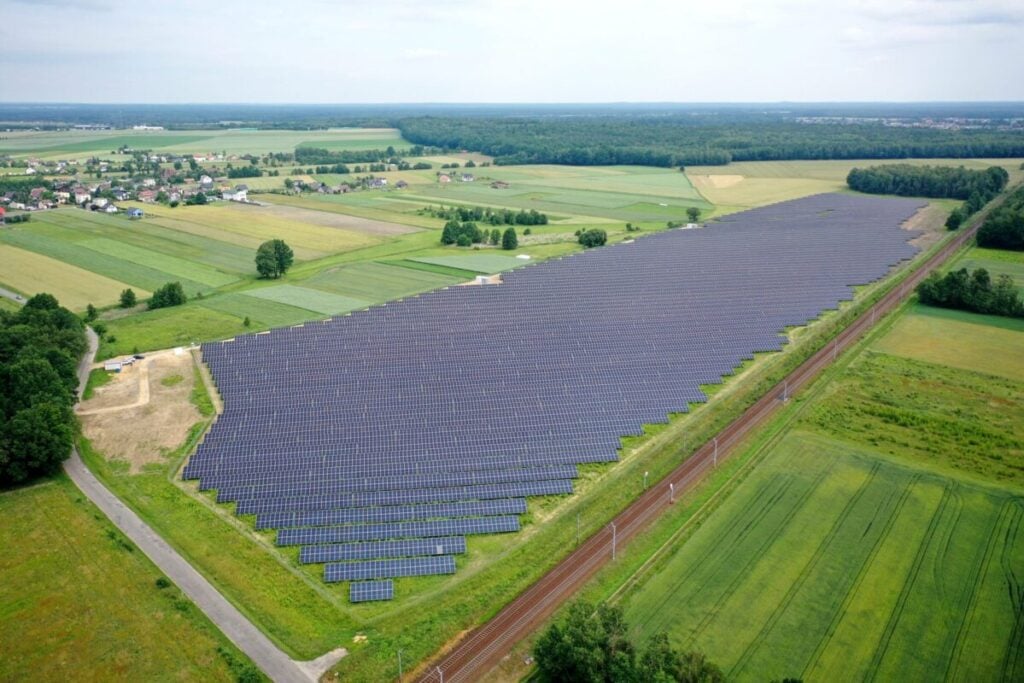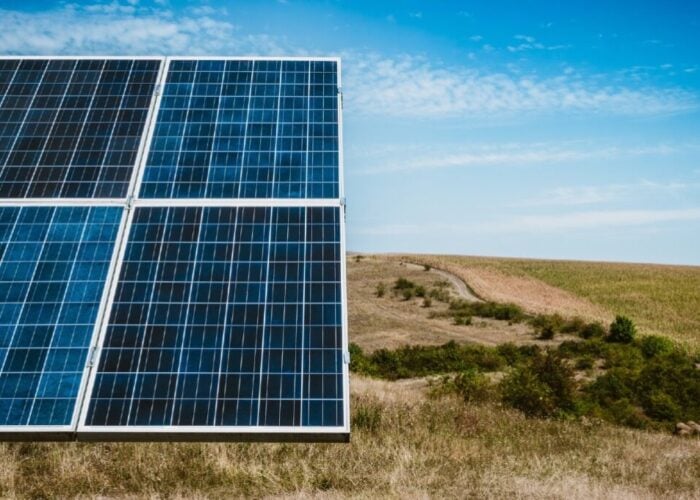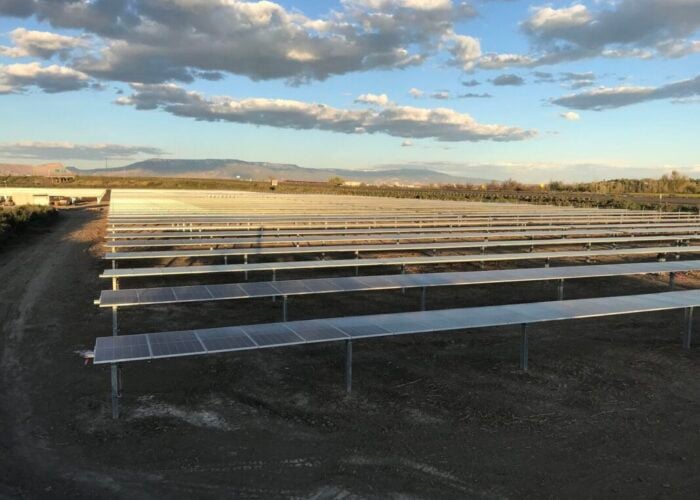
Signing a PPA is more complex than ever and managing all the moving parts involved is a key challenge for developers and offtakers. JP Casey investigates efforts currently being made to standardise the offtake agreement for the renewable power sector.
Finalising a beneficial power purchase agreement (PPA) is one of the critical components of developing a renewable power project; as Manraj Deooray, global managing director of investments, M&A and new markets at US-headquartered independent power producer (IPP) Emeren, tells PV Tech Premium, this kind of deal is “the only way to create revenue!”
Try Premium for just $1
- Full premium access for the first month at only $1
- Converts to an annual rate after 30 days unless cancelled
- Cancel anytime during the trial period
Premium Benefits
- Expert industry analysis and interviews
- Digital access to PV Tech Power journal
- Exclusive event discounts
Or get the full Premium subscription right away
Or continue reading this article for free
However, reaching these agreements is becoming increasingly challenging due to the dynamic and rapidly changing nature of the renewable energy industry. Different conditions in different markets, for instance, can make signing a PPA a challenge for companies active in several countries. According to Swiss consultancy Pexapark, between May and June 2025 the average price of a PPA signed in Poland increased by 4.6%, but the average price of a PPA signed in France fell by 1.3%.
These geographic differences are furthered by recent market disruptions, which have made many market participants – both electricity producers and offtakers – more cautious about signing deals. Within Europe, this has been most pronounced in Spain, where a significant imbalance between renewable energy generation and battery storage capacity – 33GW of solar projects versus just 18MW of standalone battery energy storage systems (BESS) – has led to dramatic shifts in electricity price and significant curtailment.
Securing offtake agreements that are tailored to individual markets and their specific complexities is vital for developers to bring their projects to commercial operation. While the complexity of these challenges means it is unlikely a single ‘one-size-fits-all’ PPA will ever be truly fit for purpose, the renewable energy industry is making better use of more standardised agreements – so-called ‘vanilla PPAs’ – as the basis of negotiations, before more specific deals, which take into account particular markets and financial challenges, can be finalised.
The growth of vanilla PPAs
When asked about the idea of a vanilla PPA, Elena Donzelli, manager of PPA and BESS transactions at Swiss consultancy Pexapark, tells PV Tech Premium that these frameworks look to quickly establish a basis for negotiations that is acceptable for all parties involved.
“[This is] a contract that is standardised, that is applicable in different situations by different counterparties and that would be acceptable to different stakeholders,” explains Donzelli, who adds that the offtake industry already relies on a number of standardised agreements to deliver exactly these starting points.
The European Federation of Energy Traders (EFET) has introduced one such vanilla PPA specifically to facilitate energy trading in Europe. Donzelli notes that this general framework can be used for physical or virtual PPAs and is sufficiently established in the industry to be “quite well-known” by banks, so many are comfortable with financing deals signed with this as the starting point.
“The International Swaps and Derivatives Association (ISDA) template is a template for derivatives products trading – so it’s used for derivatives in the wider sense – and it can be used here only for virtual PPAs,” Donzelli continues, pointing to the other main type of standardised PPA template currently in use.
Crucially, these frameworks are not just ideas but are frequently used as a starting point for negotiations in the market today. Deeoray tells PV Tech Premium that Emeren used the EFET standard, for instance, for its latest PPA, a seven-year deal signed for a 15MW solar project in Poland with a local subsidiary of an international consumer goods business.
“We wanted a starting ground that would be something that the market is attuned to,” explains Deooray. “This document has been floating around on both sides – the offtaker and the developer side – so it’s at least a good point to start with the discussion.
“Both parties – [including] the large corporates and the offtakers – are somewhat understanding of this document, so it’s not like a conflict for a starting point. It’s a starting point that allows you to gain faster traction than starting from scratch.”
The fact that the EFET document is well-established in the trading space is a key benefit, according to Donzelli, who adds that “lenders would accept it, so it would be a bankable PPA”.

Reaching market consensus and accommodating technical innovation
Both Deooray and Donzelli explain that the increasing complexity of the offtake space means that having a more standardised starting point for negotiations has become all but essential in order to sign deals in a timely fashion. They referred to negative pricing as a key challenge for both producers and offtakers, and one for which there is no industry consensus on how to manage, encouraging the industry to fall back on the consensuses that have been reached, such as the EFET and ISDA standards.
“We now have the issue of negative prices, which has been very relevant in the past couple of years,” says Donzelli. “When something new comes up and there’s no market consensus on how to treat it – so for the negative price risk there was not a consensus or market standard as to where this risk should be allocated – then you start to talk for each PPA and each negotiation on a topic like negative price risk.”
“The world of renewables is moving towards having some kind of offsetting due to negative pricing due to curtailment,” agrees Deeoray, who highlights the benefit of a standard PPA format in an industry that is increasingly reliant on a range of renewable energy technologies.
“On the technology base, that’s how you might incorporate storage into your offtake agreements,” he says. “For solar and wind, having that hybrid situation, in order to alleviate the issues of negative pricing, is how those issues are coming together.”
Deeoray also suggests that the growth of co-located renewable energy technologies as a tool to tackle negative prices has affected the way Emeren looks for and signs new offtake agreements. If a project does not have co-located storage elements, for instance, he says he would expect explicit “negative pricing security” in the contract.
“Five years ago, not many people were negotiating negative pricing terms and conditions within an offtake agreement, but now it’s becoming more standard because it’s becoming cannibalised and it’s happening more and more,” he says. “In Italy this hasn’t happened yet, but we would negotiate an offtake agreement that has a provision in there already, just in case it does happen while we operate.
“It’s becoming a little bit more integrated into the technology base, and how the market is evolving, in order to cover the risk.”
Minimising risk
Deooray also suggests that the use of vanilla PPAs is an important tool in minimising risk, which has become of even greater importance in recent years due to some of the market fluctuations in many regions where offtake agreements are being signed.
“This is one of the key risks in transacting, counterparty risk,” he says, noting that the use of a standard PPA format can help new entrants into the offtake space get up to speed quickly about how best to operate. “If you’re working with a counterparty that hasn’t done this before, you find yourself holding their hand a little bit more than you would want to, and there is definitely a transactional risk there.
“It’s very important, and nine times out of ten, we would rather go with a little lower price with having more transacting capability, rather than going for a higher price with someone [for whom] it’s their first time transacting and they don’t understand the market.”
“The most negotiated clauses in PPAs are the ones where there is a risk of costing money,” adds Donzelli, suggesting that minimising risk remains the priority for both producers and offtakers, and standardised PPAs are a means to that end. “It always comes to the point: ‘Will it cost me money if this doesn’t work out as we thought?’.”
When asked about some of the areas in which deals deviate from the EFET and ISDA standards, Donzelli says that, typically, termination clauses are among the most tailored components of a deal.
“Often, those long-term PPAs don’t allow for an ordinary termination; no-one can wake up one morning and say they don’t want the contract anymore. You need to have an event of default that is happening and if one of those events happens, you have a termination payment.
“There are very long discussions about how the termination payment is defined, and here there could be more standardisation if you make this payment market-to-market so it’s clear how important it is,” she says. “There are very convoluted formulas for termination payments that require lots of negotiation and are not standard.”

Standardising some parts of a deal
Donzelli’s discussion of termination clauses raises a question: is it possible to standardise some parts of a PPA? Or, perhaps more pertinently, what components of a PPA could benefit from a greater degree of standardisation?
“The level of [a bank’s] credit support that you put in the bank guarantee is translated into a cost for you, [so] you try to negotiate it low so you can keep this cost low,” says Donzelli, referring to the bank guarantees that are often essential in securing financial support for a project. “The question of whether you can make this standard; of course, there could be market consensus on what the level of credit support should be, but it’s still an untransparent aspect, so in the end, there’s a lot of bilateral negotiation every time.”
“One thing that we’re seeing more and more is what we call hybrid PPAs – to pool different types of assets into the same contract, be it solar-plus-wind or solar- and wind-plus-BESS – and this is a new type of deal that asset owners are trying to develop because for them, it improves what they can offer,” she continues, saying that the renewable power sector’s implementation of co-located projects has outpaced the financial sector’s ability to introduce standardised offtake formats for these projects.
“[For] those hybrid assets there is not yet a standard PPA for those. This is, I think, one of the areas – like with the negative prices – where it’s a new phenomenon in the market and people are trying to figure out how to contractualise that. There’s no standard yet and they require a lot of our help because they really need an expert to look into it, to study it and tell them how to structure it.
The balance of power
The increasing complexity of PPAs and the nuances of both working with a standardised structure and tailoring that structure for particular market and technology considerations have also prompted changes in the ways that developers and offtakers approach PPAs. Deeoray, for instance, explains that Emeren has started to build its own PPA team to negotiate with potential offtakers and that this team was involved in the Poland PPA.
“We did it with our own in-house team, which originated with the offtaker, and after the origination phase we started with the heads of terms that drafted the standardised documentation for a PPA,” he explains. “Once we got one or two rounds of that document agreed, we involved third-party advisers to finalise and fine-tune that document.”
While Emeren is an example of a producer building a specialised PPA team to work in this space, Donzelli notes that offtakers are also looking to change their ways of operating. This is particularly true for the hyperscalers, technology giants and data centre operators with vast demands for electricity and significant sums of money that are keen to acquire renewable energy; just this year, technology giant Microsoft signed a mammoth 10.5GW renewable power offtake agreement with asset owner Brookfield.
“We have the case of the big IT companies that are really active in the PPA space,” says Donzelli, who adds that the sheer scale of their demand and financial might means they are starting to influence the balance of power in offtake agreements, pushing deals away from industry standard templates and towards their own vanilla contracts. “They have their own contracts and their aim is to put on the table their own contract, and this is something that they’ve also developed … for different geographies.
Donzelli explains that these companies will often offer more money than other potential offtakers, and these deals can often be completed faster than those that rely on other kinds of framework agreements.
“Since you’re not negotiating much, you’re not spending so much time on this, so you’re getting to a signature faster [than when other standardised templates],” she says. “The time is one factor [and you can save on] us, or lawyers, or have just a light review; since there will not be so much negotiation, the timeline will be shorter and the expenses you have with advisors are also lower.”
However, Donzelli notes that, often, the hyperscalers will not allow a producer to negotiate on the deal, instead offering what she calls a “take-it-or-leave-it” kind of offer.
“They make it attractive for asset owners to go with them, because you’ll have a renowned name and a reputable company – you can say, ‘I signed a PPA with Meta!’ – and they have a very good credit rating, so they’re a very strong company to have as a counterparty. But they don’t allow for negotiations on their standard terms and conditions, and they’re not very balanced agreements; they’re quite buyer-friendly in many aspects.”
While this paints an ominous picture regarding the future of offtake agreements, at present, dealmakers are focused on standardising terms of contracts in line with new market developments, to help them minimise risk and complete deals faster. Considering the dynamism of the renewable energy industry, which obligates significant focus from dealmakers on present market conditions, Deeoray suggests that standard deal formats will persist as they facilitate the faster completion of agreements.
“[Standardisation aims] to accelerate this process, because the usual process with the corporate can take a bit of time and a lot of work back and forth in negotiating the terms,” he says. “The provisions written in the document are quite standard to allow both parties to be on an equal setting, and you start moving from that perspective.”






